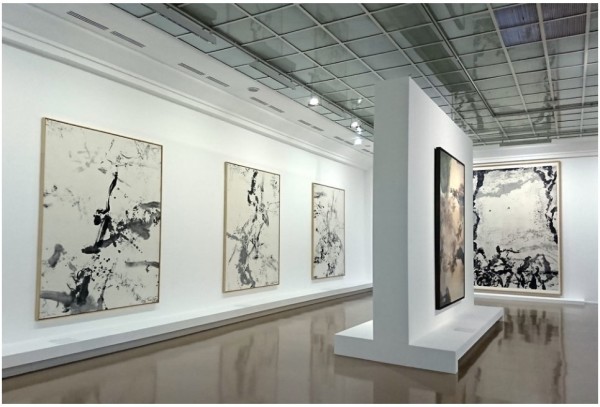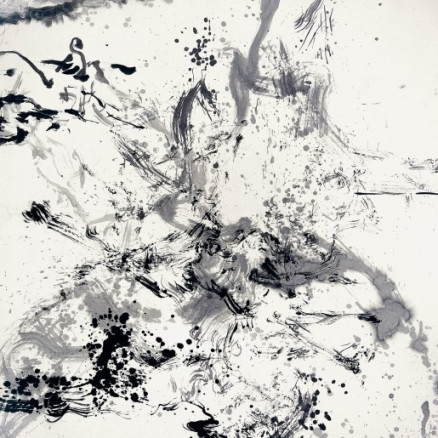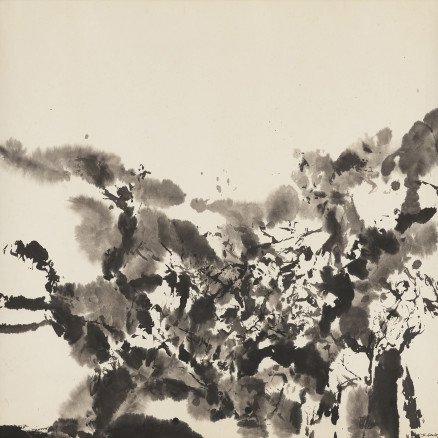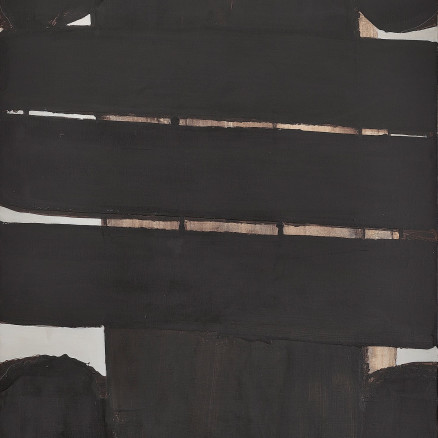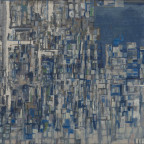Biography
Zao Wou-Ki (1920-2013) worked across a range of medium: oil on canvas, ink on paper, lithography, engraving and watercolour, creating works which sought to capture the elemental forces of nature. Today he is recognised as a pioneer of modern painting in China and a key member of the School of Paris.
Born in Peking in 1921, but raised for most of his childhood years in Shanghai, Zao was born into an old aristocratic family of intellectuals. He showed an early interest in literature and both Chinese and world history, and produced unconventional paintings at a young age. From 14 years old under the tutelage of the teachers at the Fine Art School of Hangchow, many of whom were pupils of the École des Beaux-arts in Paris or the Académie Royale in Brussels, he was exposed to the work of Cézanne, Matisse and Picasso. These artists he would consequently cite as strong influences throughout his career.
In 1948, Zao sailed for thirty-six days on a voyage to Marseille, later traveling to Paris. The French capital became an inspiration for Zao, and it was here that his work began to shift towards abstraction. Within a few months he was assimilated into a network of painters living in Paris, including Nicolas de Staël and Hans Hartung, who were already very well known, and Alberto Giacometti, Joan Miró, Maria Helena Vieira da Silva, and Jean Riopelle among others, with whom he would enjoy lifelong friendships.
A first trip to New York in 1956, accompanied by Pierre Soulages, would bring Zao into contact with the works of Barnett Newman, Franz Kline, and other Abstract Expressionists. This lead the artist to develop a bolder, more forceful and vibrant style of painting on a much larger scale. Zao, who had initially rejected the classical conventions of Chinese calligraphy and landscape painting, returned in the early 1970s to the brush-and-ink technique in which he was trained in China. His work from this period is therefore characterised by its references to Chinese calligraphic tradition.
Zao's international exhibitions include the group show The School of Paris 1959: The Internationals (1959), Walker Art Center, Minneapolis, and retrospectives of his work have been presented at Hayden Gallery, Massachusetts Institute of Technology, Cambridge (1964); Museum Folkwang, Essen, West Germany (1965); Fine Arts Museum, Taipei (1993); and Jeu de Paume, Paris (2003). He received Japan's Imperial Prize for painting (1994) and was elected to the Académie des beaux-arts, Paris (2002). Zao died on April 9, 2013, in Nyon, Switzerland.
Read moreWorks
-
 Zao Wou-Ki, Installation view of 'Zao Wou-Ki. Space is silence', City of Paris Museum of Modern Art, 2019
Zao Wou-Ki, Installation view of 'Zao Wou-Ki. Space is silence', City of Paris Museum of Modern Art, 2019
-
 Zao Wou-Ki, Installation view of 'Zao Wou-Ki. Space is silence', City of Paris Museum of Modern Art, 2019
Zao Wou-Ki, Installation view of 'Zao Wou-Ki. Space is silence', City of Paris Museum of Modern Art, 2019
-
 Zao Wou-Ki, 30.01.76, 1976
oil on canvas
81 x 65 cm
Zao Wou-Ki, 30.01.76, 1976
oil on canvas
81 x 65 cm
-
 Zao Wou-Ki, Portrait of the artist by Mohror, 1973
Zao Wou-Ki, Portrait of the artist by Mohror, 1973
-
 Zao Wou-Ki, Sans titre, 1949
oil on board
24 x 19 cm
Zao Wou-Ki, Sans titre, 1949
oil on board
24 x 19 cm







